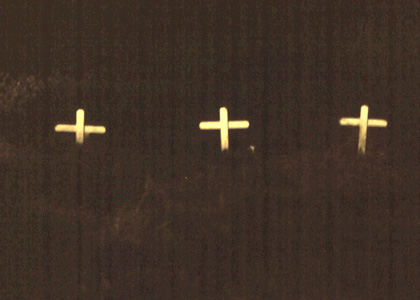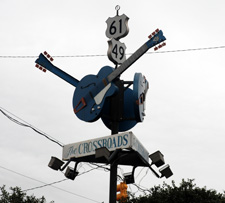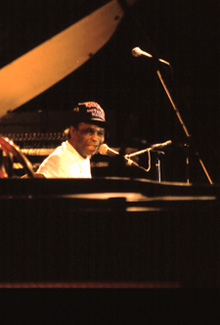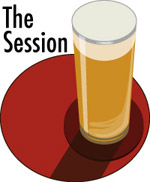“Brauereisterben: The sad state of German beer culture” has been making the rounds since Slate posted it yesterday. Not exactly news to those who have been paying attention. But Slate doesn’t devote much bandwidth to beer, and doesn’t count among those paying attention.
The word Brauereisterben, drawn for the term for Germany’s dying forests (Waldsterben), has been around since the mid-90s. No disputing that beer production and consumption are sinking, but when Americans are called upon to comment on anybody else’s beer culture we should take care using words like “sad state” in the headline.
It would have been one thing had Germans said just that in the story, but it hardly reads as if they were consulted. Additionally, the supporting evidence was at times questionable — or best I can tell plain wrong.
For instance, the statement that Berlin supported 700 breweries in the early nineteenth century. According to Ron Pattinson’s meticulously documented European Beer Guide 82 breweries operated in Berlin in 1800 and 42 by 1816. Go back to 1730 and 426 existed, but most of those would have been in homes. Where does the number 700 come from? Perhaps Wikipedia, which in turn cites the German Beer Institute. Pattinson has documented just a few of the errors there.
Or there is the aside that German beer production is less than half of the United States’ output — not surprising since Germany has only something more than a quarter of the population.
And then there are the parts of the story that are missing. Such as details in an article by Sylvia Kopp, who is German, in All About Beer Magazine three years ago. She wrote, “However, most Germans, when asked what beer they prefer, will answer, passionately, with a brand name. This is the German paradox: we love beer dearly, it is an integral part of our culture, yet it has become a commodity.”
The challenge is not unique to Germany. Brewers everywhere want to make regular beers special enough that they are not a commodity, but still regular beers. (Yes, there is another category of beers that are stronger, hoppier, include ingredients beyond the norm, and they are one way for brewers to make a statement that “Everything I make is special.”)
Kopp talked to brewers about this.
Sebastian B. Priller, the junior owner and manager of Brauhaus Riegele, the foremost independent brewer in Augsburg, holds a clear opinion: “When it comes to beer, Germans focus more on marketing, branding, sponsoring, pricing and all that, instead of talking about the product itself. I think it is high time to put the beer first: its taste, its ingredients, the way it is brewed, the food it pairs with. And we need to live this culture and celebrate beer like they do with wine.”
Of course she addressed the matter of the Reinheitsgebot (the story was headlined, “Ruled by the Reinheitsgebot?”) As did Barry M at the Bitten Bullet in commenting on the Slate story, noteworthy because he’s an Irishman living in Germany. If we get a look at this sucker from enough angles we might be able to figure it out.
So one more view. From a man born in Wyoming, who has lived in Europe and Germany for more than 20 years and been the brewmaster at Private Landbrauerei Schönram for 13 years. The Bavarian brewery in Petting/Schönram — not far from Salzburg, Austria — has more than doubled its sales during that time.
Eric Toft has succeeded by emphasizing quality ingredients and traditional brewing methods, but he’s also an agent of change. Last week he bottled his first IPA in 750ml corked bottles. Most of that will go to Italy.
He is a member of Bier-Quer-Denker, a group of brewers who look both within Germany and beyond for inspiration. Bier-Quer-Denker, roughly translated means “beer lateral thinker.” For instance, for one seminar Frank Mueller from Brauhaus Riegele brought a kellerbier made with a mixture of three grains, including wheat, and fermented with an English ale yeast.
Toft makes a strong argument that the Reinheitsgebot should not limit a brewer.
“There has been a collective, though not all brewers are guilty of this, mass misinterpretation of the Reinheitsgebot — Reinheitsgebot as Einheitsgebot, meaning all beer must taste the same or all brands are interchangeable. Over the years, processes and technology in the breweries have also become very similar. I see the Reinheitsgebot as just the opposite,” he said. “Because we are forced to work within these narrow confines, we should see it as motivation for creativity and opportunity to set our brands apart from the others. This begins with the selection of the raw materials and carries through the entire process.
“The Reinheitsgebot should be a guarantee for the greatest diversity possible, unfortunately the opposite is true. But consider this: worldwide, 199 different hop varieties are cultivated. In Germany alone, we have 23 different varieties of two-row barley. The yeast bank in Weihenstephan lists 80 strains on their regular list, and more are available on request. Luckily, there is more than a handful of brewers around who are swimming against the tide.”
They aren’t ready to leave the German beer culture for dead.

 Since we’re pretty sure that Johnson didn’t actually enter in a transaction with the devil it might seem silly to worry about the location of THE crossroads themselves, but humor me. It wasn’t necessarily, or even probably, where Highway 61 and Highway 49 meet.
Since we’re pretty sure that Johnson didn’t actually enter in a transaction with the devil it might seem silly to worry about the location of THE crossroads themselves, but humor me. It wasn’t necessarily, or even probably, where Highway 61 and Highway 49 meet. Honeyboy Edwards, who’ll be 96 years old in June, tells a convincing story in that 1990 Living Blues about playing with Johnson the night he was poisoned. By a bit of chance we heard him repeat it in 1992 at a Clarksdale, Mississippi, lunch spot called Fair’s. He was in town to enjoy the Sunflower Blues Festival. The week before he performed at the first — there might have one or two more — Robert Johnson Crossroads Festival in nearby Greenwood (the photo on the right). Anyway, if I were in charge of organizing a Robert Johnson commemorative beer I’d invite Honeyboy to toss in a few hops.
Honeyboy Edwards, who’ll be 96 years old in June, tells a convincing story in that 1990 Living Blues about playing with Johnson the night he was poisoned. By a bit of chance we heard him repeat it in 1992 at a Clarksdale, Mississippi, lunch spot called Fair’s. He was in town to enjoy the Sunflower Blues Festival. The week before he performed at the first — there might have one or two more — Robert Johnson Crossroads Festival in nearby Greenwood (the photo on the right). Anyway, if I were in charge of organizing a Robert Johnson commemorative beer I’d invite Honeyboy to toss in a few hops. Don’t forget The Session #49 on Friday, when
Don’t forget The Session #49 on Friday, when